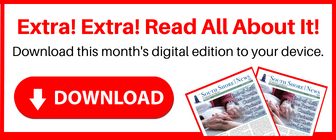By Patricia Prewitt, Consumer Education Advocate
Many people I know have asked me questions about prescription savings program cards. You may have seen advertisements on TV for GoodRx, Singlecare,or received a free card in the mail. Those are the most well known companies, but there are many entities who have savings cards—even some states.
What are prescription savings cards?
Prescription savings cards look like an insurance card with special numbers, and bin codes. These cards are NOT insurance. Think of them more like a “mystery savings coupon” from your favorite retail store.
The cards are free, and often found in healthcare settings.Simply download the savings card app of your choice on a device such as a phone, tablet, or computer to search prices. Print or take a picture of the card to have with you when filling a prescription.
How do they work?
It’s marketing. Pharmacies want to attract and retain customers. Big box stores and chains with pharmacies believe customers will make other purchases, increasing profits. The prescription savings card company gets a small percentage of the sale, and the pharmacy pays a fee to the administrator of the program.
Why do I see so many different prices for different cards when I compare them?
Different market areas, and towns with the same zip code have different prices at different pharmacies. A teacher I worked with was paying $25 a month for medication with her insurance. I found a savings card that brought her costs down to $29.97 for a 3-month supply in a nearby town. She chose to make the switch, after confirming the savings card acceptance, to save about $180 this year at a different pharmacy.
When would I want to use a savings card?
First: These programs can be terrific for people without prescription insurance. It’s possible to save 20% or more than the “usual and customary” price.
Second: If your medication is not covered on the formulary, using a savings card may save money. These are often medications that are deemed “not medically necessary” or lifestyle prescriptions, such as hair growth products.
Third: If your prescription plan has a high deductible, or a high copay amount, these cards may be a better option.
I found my prescription at a lower cost than my prescription plan. So, what’s the catch?
Privacy safeguards are not the same. When prescriptions are processed with a savings card, it becomes a “direct-to-consumer” sale. In February 2023, GoodRx Holdings LLC was fined $1.5 million by the Federal Trade Commision for failing to report its unauthorized disclosure of consumer health information for advertising purposes.
Savings cards offered by nonprofits such as NeedyMeds, may offer better privacy protection than nationally advertised savings programs.
Practical Considerations:
Always compare the saving program coupon price to your current out-of-pocket cost for the medication. Comparison shopping is time consuming, and prices change often.
Usually, the best savings are found when a generic chronic medication has moved to a fixed $20-$30 monthly cost on your prescription plan. Medication pricing has many layers that are difficult to understand. These savings card programs use computer systems to obtain the customer the lowest price of discount based on the average wholesale price (AWP) or discount for manufacturer acquisition cost (MAC) or any pharmacy retail special promotional rate.
About the Author: Patricia Prewitt is a local Massachusetts resident who spent over 30 years in the pharmaceutical industry. Tricia is a consumer education advocate, and loves helping people find ways to save money on their prescriptions. More information and free resources are available on her website at https://mypersonalrxadvisor.com or call her at 508-507-8840. Favorite Quote: “Act as if what you do makes a difference. It does.”—William James


